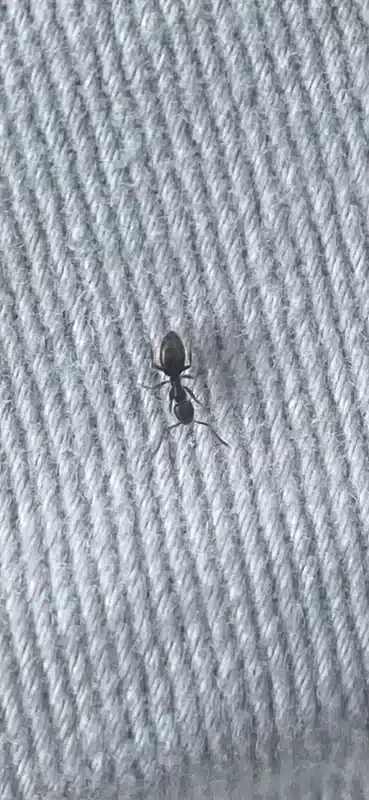Finding sugar ants in kitchen areas can be incredibly frustrating. These tiny invaders seem to appear out of nowhere, marching in perfect lines toward any sweet substance they can find. Whether they’re streaming across your countertops or congregating around your coffee maker, these persistent pests require a strategic approach to eliminate completely.
In my experience serving the DC metro area for over three decades, spring brings the most ant complaints. Most homeowners first spot them in kitchens or bathrooms, drawn by the perfect combination of food sources and moisture. The key to successful elimination lies in understanding which species you’re dealing with and why traditional spraying methods often make the problem worse.
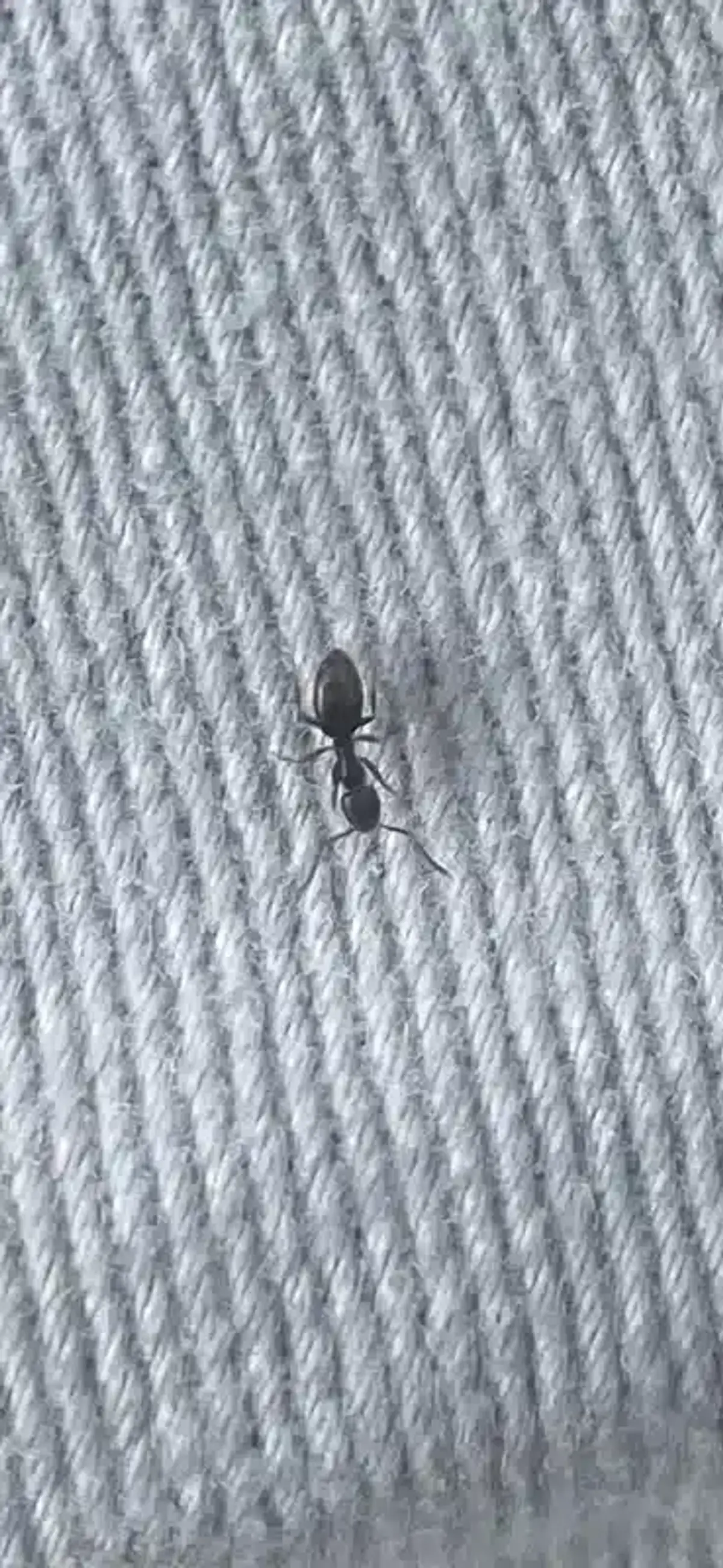
Identifying Common Sugar Ants in DMV Kitchens
The term “sugar ants” actually refers to several different species that share a love for sweet substances. Understanding which type has invaded your kitchen helps determine the most effective treatment approach.
Pavement Ants: The Foundation Specialists
Pavement ants measure 2.5-4 mm and appear brown to black with fine parallel ridges on their heads. These ants typically nest under sidewalks, driveways, and heated foundations. Their colonies contain 3,000-10,000 workers with a single queen, making them easier to eliminate than multi-queen species.
During spring months, you’ll often see pavement ants trailing from outdoor nests into kitchens. They’re particularly common in areas like Chantilly, where the clay-heavy soil provides ideal nesting conditions near foundation walls.
Odorous House Ants: The Colony Splitters
Measuring 2-3 mm, odorous house ants appear uniform dark brown to black. When crushed, they emit a distinctive rotten coconut smell. These ants form “super-colonies” with multiple queens that readily split when disturbed.
This splitting behavior makes odorous house ants particularly challenging. Spraying visible trails often triggers the colony to divide, creating multiple smaller infestations throughout your home.
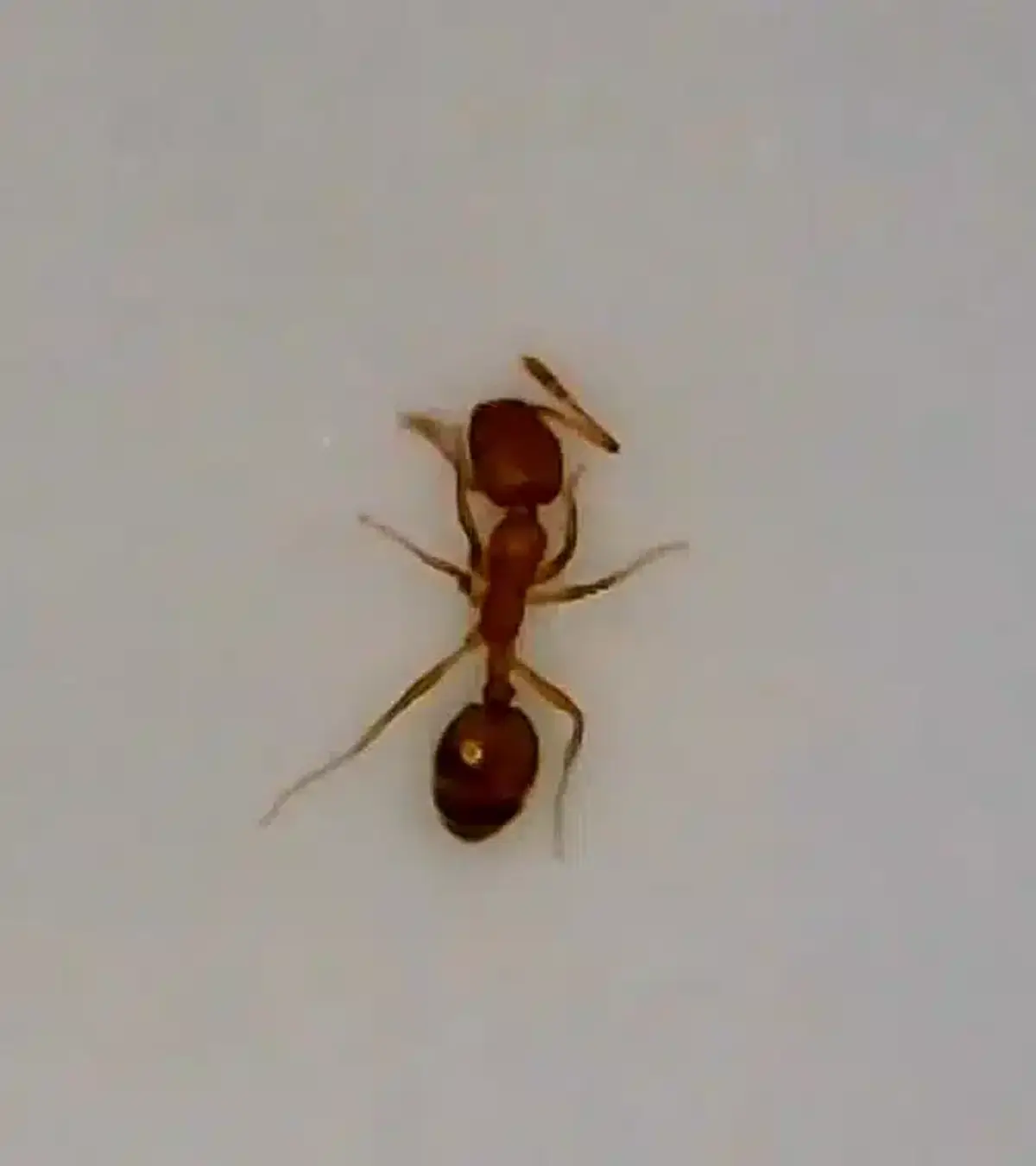
Pharaoh Ants: The Budding Challenge
At 1.5-2 mm, Pharaoh ants are pale yellow to red with darker abdomens. These indoor specialists thrive year-round in heated buildings and form hundreds of micro-colonies. Any stress triggers “budding,” where queens and workers break off to establish new nests.
Pharaoh ants require the most patience during elimination. Their complex colony structure means baiting programs can take 4-8 weeks to achieve complete control.
Quick Sugar Ant Identification Guide
- Pavement Ants: 2.5-4mm, brown-black, single queen colonies (easier to eliminate)
- Odorous House Ants: 2-3mm, dark brown, coconut smell when crushed, multiple queens
- Pharaoh Ants: 1.5-2mm, pale yellow-red, hundreds of micro-colonies (hardest to eliminate)
- Key Tip: Species identification determines treatment strategy - don’t guess!
| Pavement Ants | Odorous House | Pharaoh Ants | |
|---|---|---|---|
| Treatment Time | 4-7 days | 10-21 days | 4-8 weeks |
| Colony Structure | Single queen | Multiple queens | Hundreds of micro-colonies |
| Difficulty Level | Easy | Moderate | Challenging |
Why Sugar Ants Target Your Kitchen
Kitchens provide everything ants need to survive and thrive. Understanding these attractants helps you eliminate them more effectively.
Food sources are the primary draw. Sugar, honey, syrups, and drink residues provide the carbohydrates worker ants need. Even microscopic amounts can sustain large colonies - as little as 0.01 grams of sugar can feed 1,000 odorous house ant workers for an entire day.
Water sources keep colonies hydrated. Dish cloths, sink rims, refrigerator drip pans, and pet bowls all provide necessary moisture. This explains why ants in the kitchen often concentrate around sinks and appliances.
Additionally, kitchens offer numerous nesting opportunities. Wall voids, cabinet kick-plates, and spaces behind dishwashers provide protected areas for satellite colonies. The stable temperature makes these locations even more attractive.
Finding and Eliminating Ant Trails
Successful elimination starts with tracking ant movements. Worker ants lay pheromone trails that guide other colony members to food sources. These invisible highways are renewed every 1-2 minutes by passing ants.
Follow visible trails to identify entry points. Common access routes include utility penetrations, sill plates, window frames, and gaps around plumbing. Mark these locations for both bait placement and future exclusion work.
Before baiting, wipe existing trails with unscented soap and water or white vinegar. This removes competing pheromone signals that might draw ants away from your bait stations. The cleaning step is crucial but often overlooked.
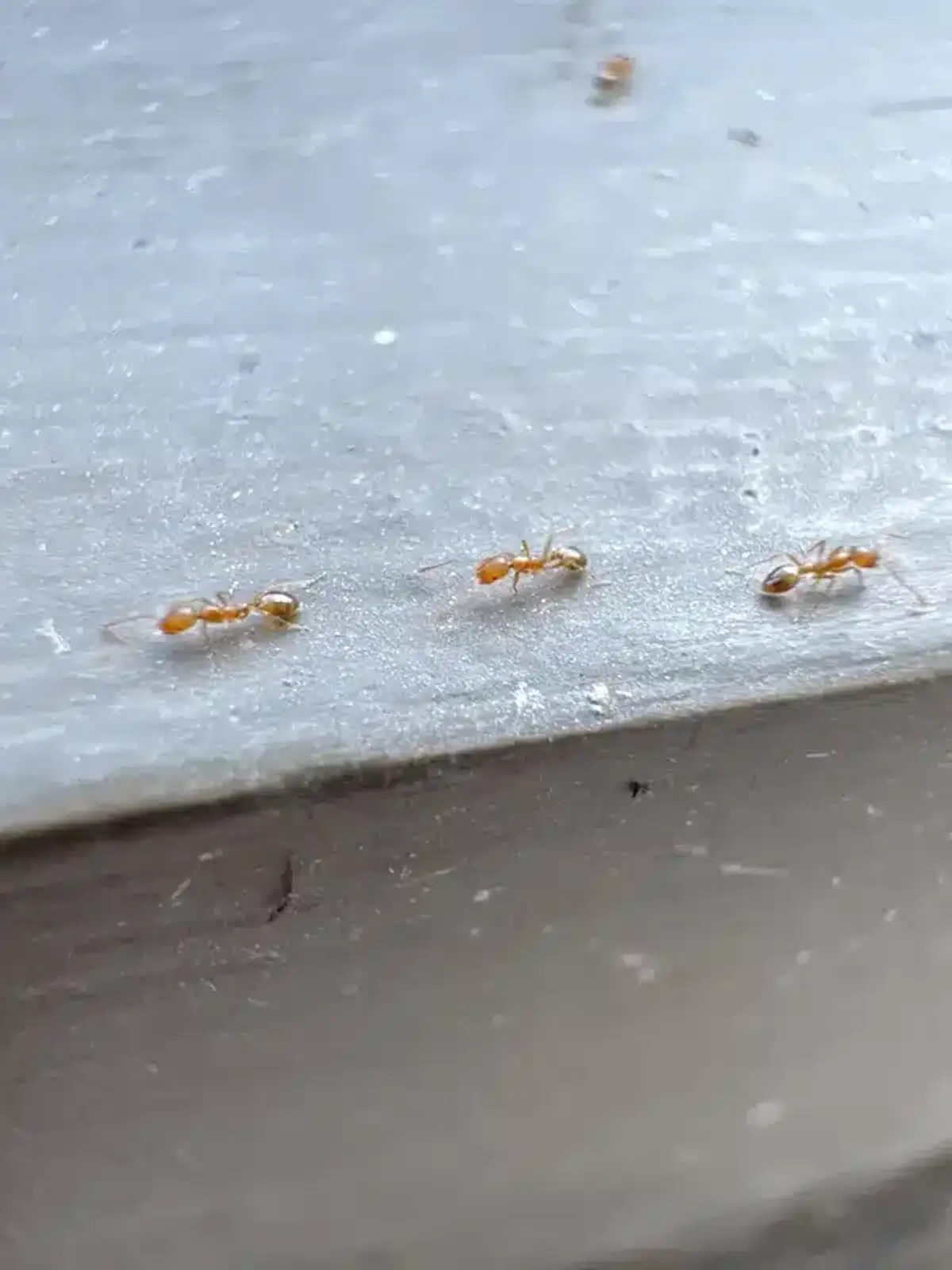
How to Get Rid of Sugar Ants: Sweet Bait Strategies That Actually Work
Effective baiting requires the right combination of attractant and active ingredient. The goal is to create something irresistible that workers will carry back to feed the entire colony.
Choosing the Right Concentration
Boric acid concentrations of 0.5-1% in sugar water prove most effective. Higher concentrations become repellent, causing ants to avoid the bait entirely. The optimal balance ensures maximum uptake without immediate toxicity.
What does the science say?
According to research from Virginia Tech, 20% sucrose solutions provide peak uptake for odorous house ants in laboratory testing. The study measured feeding behavior across different concentrations and found this concentration attracted the highest number of foragers over 24-hour periods.
The research also demonstrated that concentrations above 1% boric acid triggered avoidance behaviors, with ants detecting the toxic compound and refusing to feed, which explains why commercial ant baits use precisely controlled formulations.
Commercial gel baits containing hydramethylnon or fipronil work well for pavement ants and Pharaoh ants. These slow-acting ingredients allow workers to return to the colony before dying, ensuring maximum distribution to nestmates.
Strategic Bait Placement
Place baits along active trails but away from children and pets. For pavement ants, outdoor perimeter stations often work better than indoor placement, intercepting foragers before they enter your kitchen.
Keep bait continuously available until uptake ceases. Replace dried liquid baits every 2-3 days to maintain attractiveness. Refillable stations prevent evaporation and maintain effectiveness longer.
Sometimes colonies switch dietary preferences based on brood development stages. If ants ignore sweet baits, offer protein or fat-based alternatives alongside sugar baits.
Deep Cleaning Beyond Visible Surfaces
Eliminating sugar ants in kitchen areas requires more than wiping countertops. Hidden food sources can sustain entire colonies even when visible areas appear clean.
I’ve tracked ant trails to unexpected sources countless times - syrup drops behind appliances, spills under containers in cabinets, or residue in recycling bins. One memorable case involved a customer who couldn’t understand why ants kept returning until we found honey that had seeped under a cabinet shelf.
Pull major appliances to clean underneath. Vacuum crumb pans in stoves and toasters. Degrease cabinet lips where sticky residues accumulate. Mop thoroughly under kick-plates where spills often go unnoticed.
Rinse all recycling containers, especially soda cans and syrup bottles. Even trace amounts of sticky residue can attract foraging ants. Empty and scrub trash cans weekly, paying attention to the bottom where liquids collect.
Checking Unexpected Sweet Sources
Beyond obvious kitchen attractants, several hidden sources can undermine your elimination efforts. These often-overlooked items can sustain ant colonies even after thorough kitchen cleaning.
Check these common culprits:
- Overspill under high chairs and around children’s eating areas
- Juice boxes in bedroom wastebaskets
- Sticky liquor bottles in wet bars or pantries
- Leaking hummingbird feeders on decks or patios
- Fermenting fruit in compost containers
- Pet food bowls with dried kibble coating
Each of these sources can provide enough sustenance to keep worker ants active. Until you eliminate every attractant, colonies will continue sending scouts into your kitchen.
Seasonal Patterns in the DMV Area
Understanding seasonal activity helps predict and prevent sugar ants in kitchen invasions. The Mid-Atlantic’s humid subtropical climate creates distinct patterns for different species.
Odorous house ant foraging begins when nighttime temperatures stay above 50°F, typically late March. Activity peaks from May through September, with a shift to cooler nocturnal foraging during summer heat waves.
Pavement ants swarm from April through June but can remain active indoors all winter in heated areas. Winter sightings usually trace to nests under boiler rooms or foundation cracks where concrete stays warm.
Pharaoh ants stay active year-round indoors. Thermostat changes during heating season startup often trigger budding, causing sudden trail explosions in October and November.

Why Spraying Makes Colonies Split
Many homeowners reach for aerosol sprays when they first notice ant trails. Unfortunately, this approach often makes infestations worse by triggering defensive colony behavior.
Repellent pyrethroids drive queens and workers to break off from the main colony, creating multiple new nests. This “budding” behavior is well-documented in both Pharaoh ants and odorous house ants after barrier spray applications.
Contact sprays also kill exposed foragers before they can share bait with nestmates. This undermines the slow-kill strategy that makes baiting so effective. I always tell customers: no aerosols or perimeter sprays while baiting programs are active.
The colony splitting phenomenon explains why some customers call us after trying DIY treatments. What started as one trail becomes three or four separate problems throughout the house.
Critical Warning
Never spray sugar ants with aerosols! Spraying triggers colony splitting, where queens break off to form multiple new nests throughout your home. This defense mechanism turns one problem into several larger infestations.
Patience Required for Baiting Success
Effective ant elimination takes time, especially when dealing with complex colony structures. Understanding realistic timelines helps maintain proper expectations during treatment.
Pavement ant colonies typically show visible decline within 4-7 days of consistent baiting. Their single-queen structure makes them relatively straightforward to eliminate once workers start sharing bait.
Odorous house ants require 10-21 days for noticeable reduction. Their multi-queen super-colonies need time for bait to reach all reproductive individuals. Patience during this period is essential - premature spraying restarts the process.
Pharaoh ants present the biggest challenge, often requiring 4-8 weeks for complete elimination. IGR (insect growth regulator) baits must sterilize multiple queens across numerous micro-colonies. The complex process takes time but achieves lasting results.
How to Prevent Sugar Ants: Stop Reinfestation
Once you’ve eliminated active colonies, preventing future invasions becomes the priority. Comprehensive exclusion and maintenance keep your kitchen ant-free long-term.
Seal entry gaps 1/4 inch or wider with silicone or polyurethane caulk. Foam larger voids, particularly plumbing penetrations under sinks. Replace worn weather-stripping and add door sweeps to exterior entrances.
Trim vegetation 12 inches from siding. Keep mulch and leaf litter from touching your foundation to deny ants protected foraging corridors. These simple landscaping changes eliminate highways that lead directly to your home.
Continue tri-annual inspections (three times per year) even after elimination. Ants can reinvade from neighboring properties within weeks if food sources and entry points reappear. Early detection makes future problems much easier to manage.
Essential Prevention Maintenance
- Deep Clean Weekly: Wipe down appliances, clean under kick-plates, empty and scrub trash cans
- Seal Entry Points: Caulk gaps 1/4 inch or wider, foam plumbing penetrations, replace weather-stripping
- Trim Vegetation: Keep plants 12 inches from siding, remove mulch from foundation contact
- Tri-Annual Inspections (Three Times Per Year): Check for new trails, moisture issues, and hidden food sources
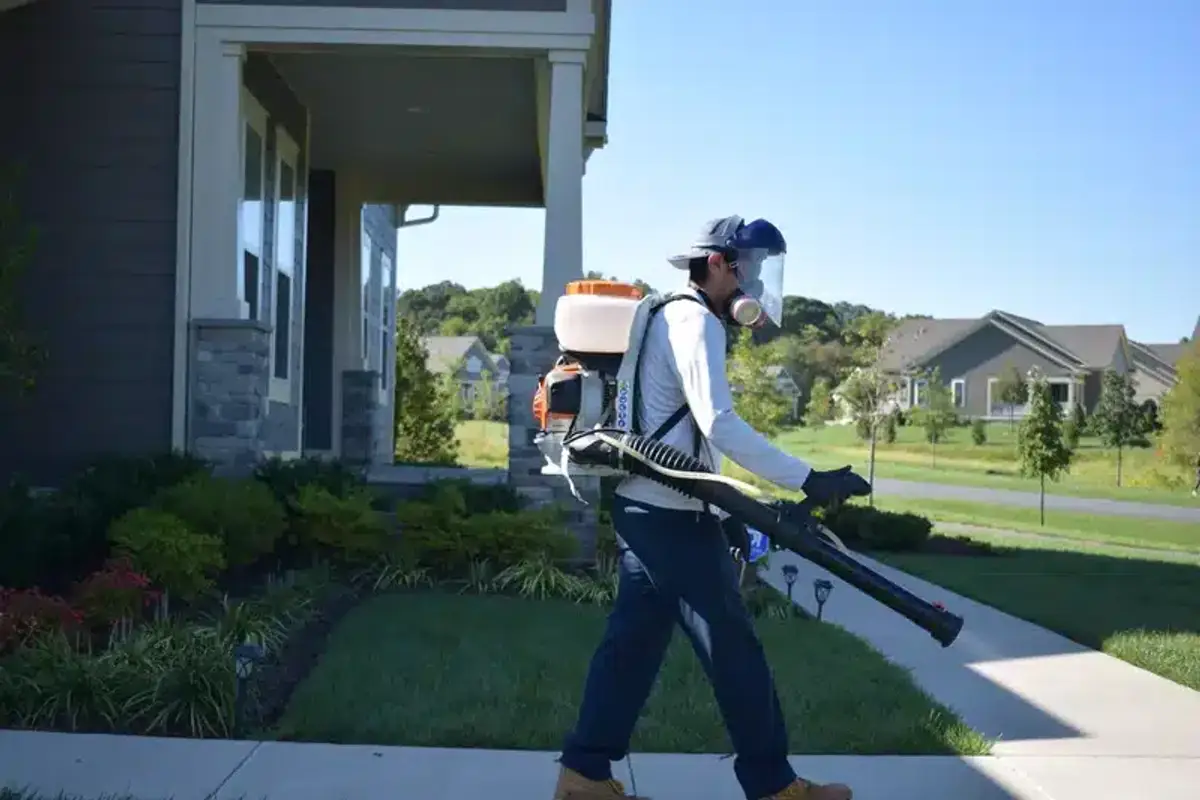
Professional Pest Control for Persistent Sugar Ant Colonies
Some infestations require professional intervention, especially when dealing with large multi-queen colonies or inaccessible nesting sites. Knowing when to call experts can save time and frustration.
Pharaoh ant infestations in multi-unit housing often need building-wide treatment programs. These complex cases require coordination between multiple units and access to professional-grade materials not available to consumers.
Licensed operators can deploy specialized formulations like fipronil foam for wall voids or chlorfenapyr transfer liquids for difficult access areas. We also have access to commercial-grade bait grids that provide more comprehensive coverage.
Repeat odorous house ant invasions despite proper baiting and maintenance may indicate large outdoor super-colonies. Professional perimeter treatments using non-repellent materials can intercept foragers before they reach your kitchen.
Our proven elimination techniques combine targeted baiting with comprehensive exclusion work. The approach addresses both immediate problems and long-term prevention in a single program.
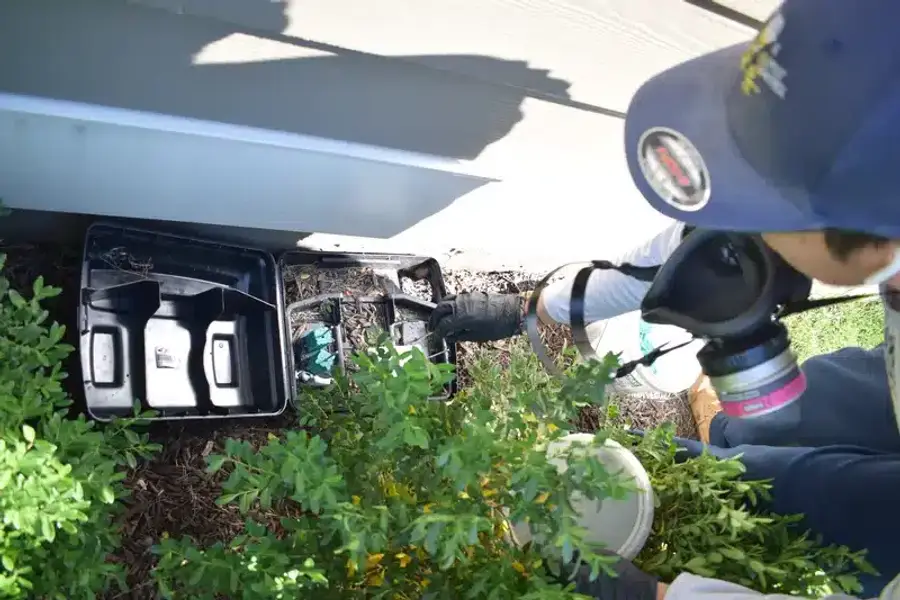
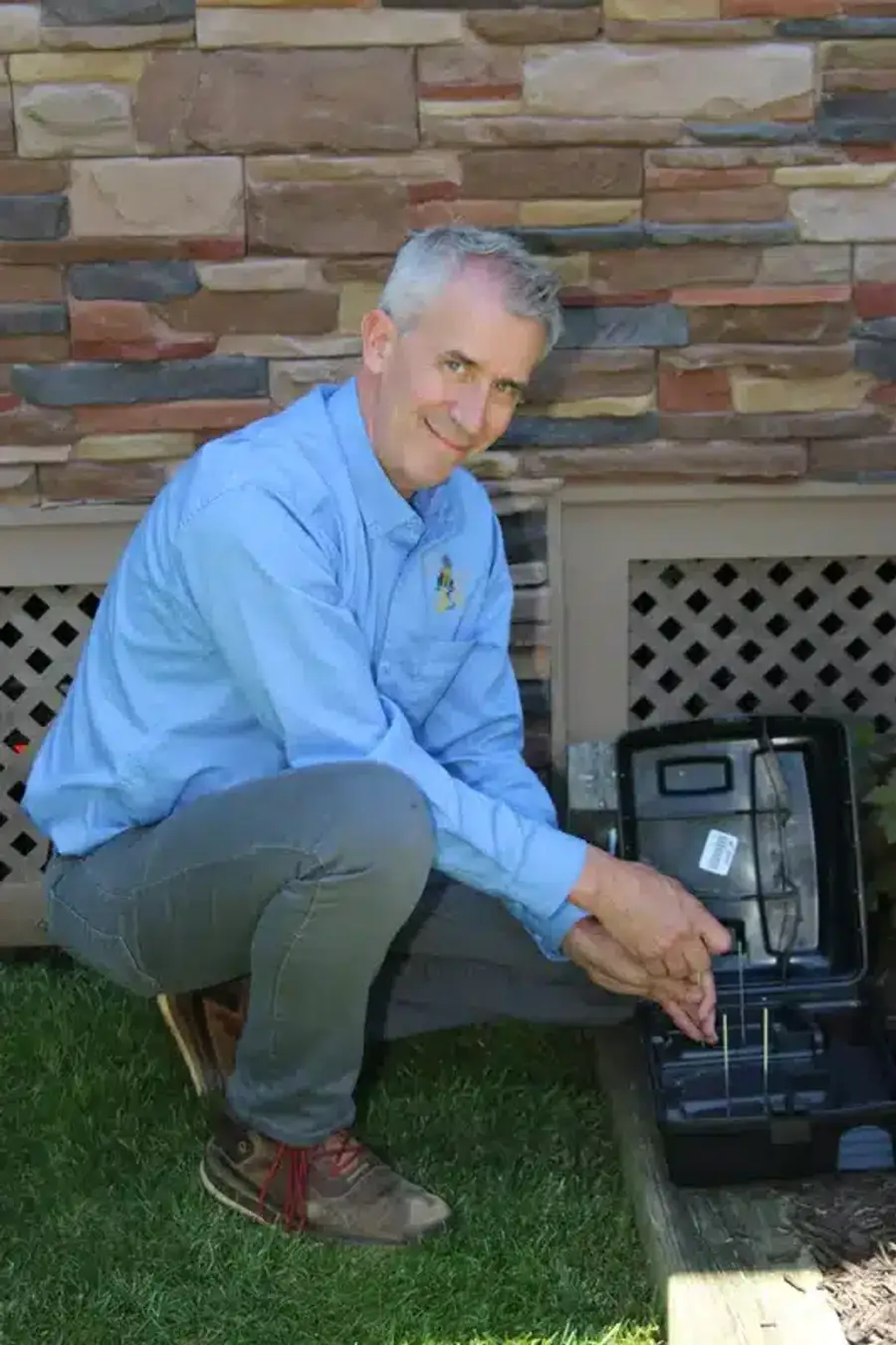
Successfully eliminating sugar ants in kitchen areas requires a comprehensive approach that addresses identification, elimination, and prevention. The process takes patience, especially with complex species like Pharaoh ants, but thorough treatment achieves lasting results.
Remember that spraying visible trails often makes problems worse by triggering colony splitting. Instead, focus on strategic baiting, deep cleaning, and exclusion work. For persistent infestations or complex colony structures, professional treatment provides access to specialized materials and techniques that ensure complete elimination.
If you’re struggling with sugar ants or want to prevent future invasions, our experienced team can help. We’ve been serving DMV area homes for over 50 years and understand the specific challenges these pests present. Call us at 703-683-2000 for a consultation or email us at info@bettertermite.com to discuss your specific situation.
Frequently Asked Questions
What attracts sugar ants to my kitchen?
+
Sugar ants are drawn to kitchens by sweet substances like sugar, honey, and syrup residues, plus water sources from sinks and appliances. Even microscopic amounts of food can sustain large colonies, which is why thorough cleaning beyond visible surfaces is essential for elimination.
Why do I see more ants after spraying them?
+
Spraying often triggers colony splitting, where queens and workers break off to form new nests throughout your home. Repellent sprays also kill foragers before they can carry bait back to the colony, making elimination much harder. Baiting works better than spraying for long-term control.
How long does it take to eliminate sugar ants completely?
+
Timeline depends on the species. Pavement ants typically decline within 4-7 days, odorous house ants need 10-21 days, and Pharaoh ants can take 4-8 weeks. The complex colony structures of some species require patience, but thorough baiting programs achieve lasting elimination.
What's the difference between sugar ant species?
+
Pavement ants are 2.5-4mm brown-black ants with single queens. Odorous house ants are 2-3mm dark ants that smell like rotten coconut when crushed and have multiple queens. Pharaoh ants are 1.5-2mm pale yellow-red ants that form hundreds of micro-colonies and are the hardest to eliminate.
Can I use baking soda to kill sugar ants?
+
While baking soda can affect individual ants, it is not effective for colony elimination. Professional-grade baits with slow-acting ingredients like boric acid work better because they allow workers to return and share the bait with the entire colony, including queens.
When are sugar ants most active in the DMV area?
+
Activity varies by species. Odorous house ants begin foraging in late March when temperatures stay above 50°F, peaking May-September. Pavement ants swarm April-June but can stay active indoors all winter. Pharaoh ants remain active year-round, with budding often triggered by heating system changes.
Should I clean ant trails before baiting?
+
Yes, wiping existing trails with unscented soap and water or vinegar removes competing pheromone signals. This prevents ants from following old trails instead of finding your bait stations. Trail cleaning is a crucial but often overlooked step in successful baiting programs.
Why do sugar ants keep coming back after treatment?
+
Persistent infestations usually indicate incomplete elimination of food sources, unsealed entry points, or large outdoor colonies. Hidden attractants like sticky residue under appliances or gaps in exclusion work can sustain new invasions. Professional inspection can identify overlooked problem areas.
What's the best way to prevent sugar ants?
+
Prevention combines thorough cleaning, exclusion, and maintenance. Eliminate all food sources including hidden residues, seal entry gaps 1/4 inch or larger, trim vegetation away from your foundation, and conduct tri-annual inspections (three times per year). Early detection makes future problems much easier to manage.
When should I call a professional for sugar ant control?
+
Call a professional whenever ants invade multiple rooms, DIY baits fail, you find activity inside wall voids or plumbing areas, or the infestation continues despite thorough sanitation and exclusion. Our registered technicians identify the species, deploy multi-queen solutions, and coordinate follow-up visits to ensure complete elimination.
With five years of hands-on experience in the pest control industry, George Schulz is a registered technician with the Virginia Pest Management Association and a proud third-generation professional in a family business that's been protecting homes for over 57 years. He manages and trains a team of service pros while also leading internal research efforts—recently spearheading a deep-dive review of thousands of documents on pest control materials to hand-pick the most kid and pet friendly, most effective solutions tailored specifically for homes in the DC metro area.
